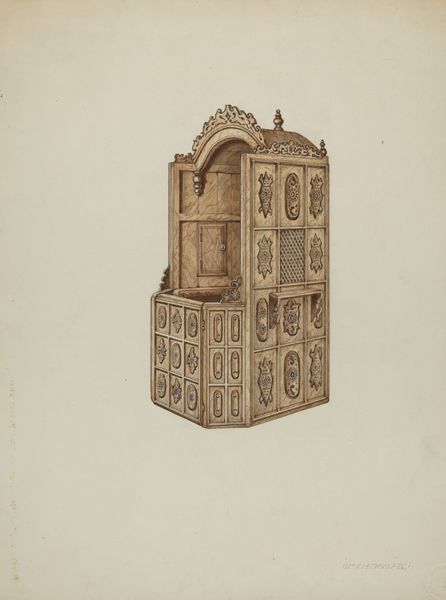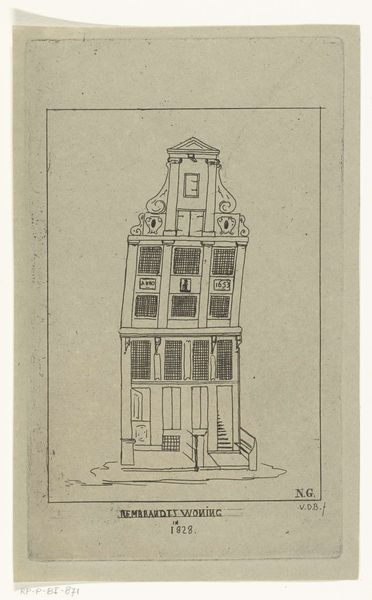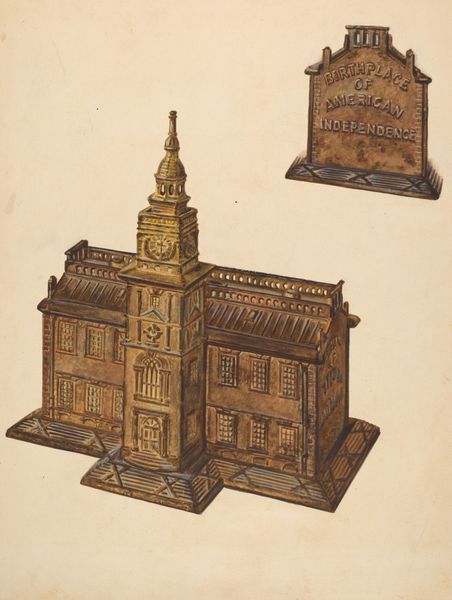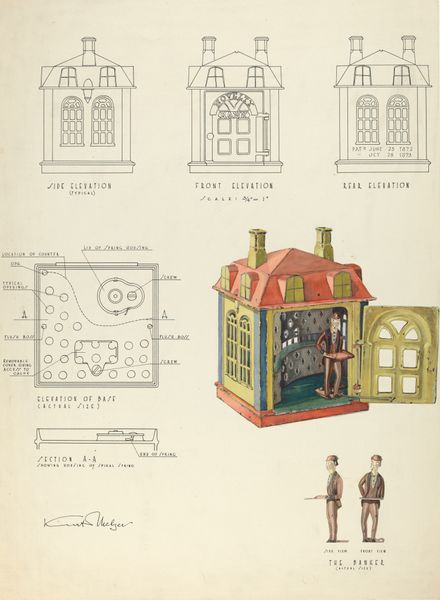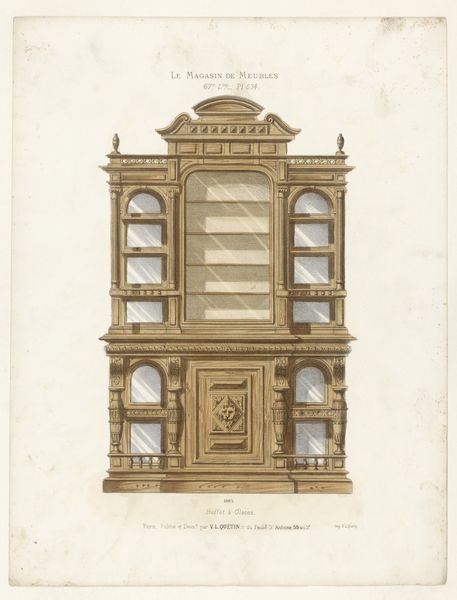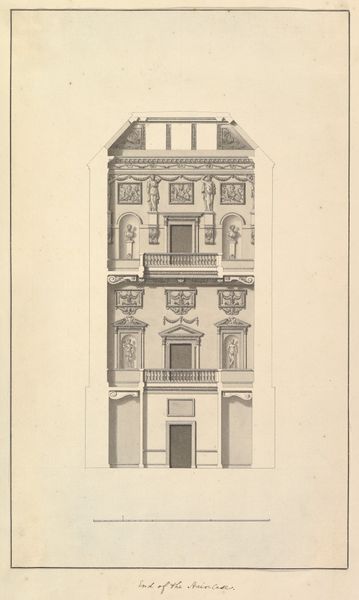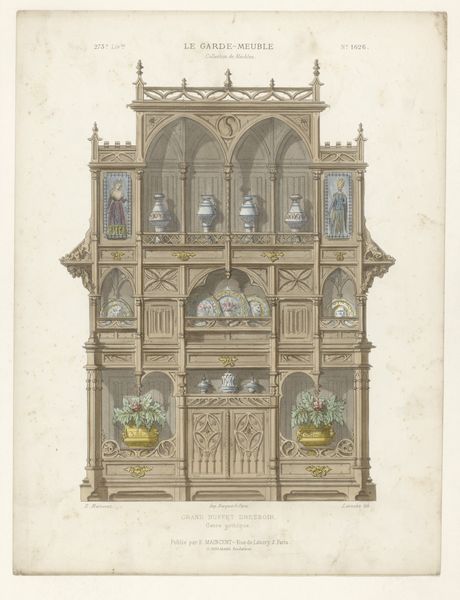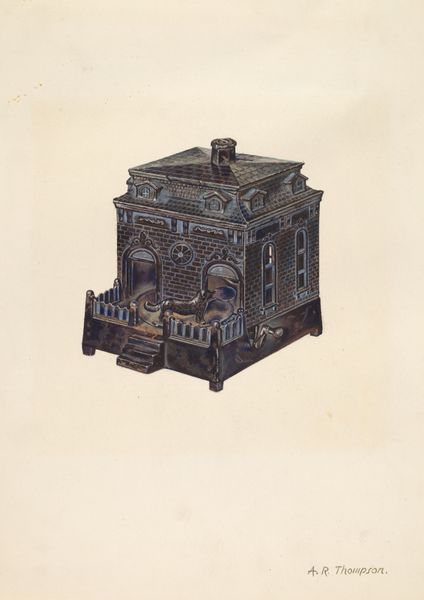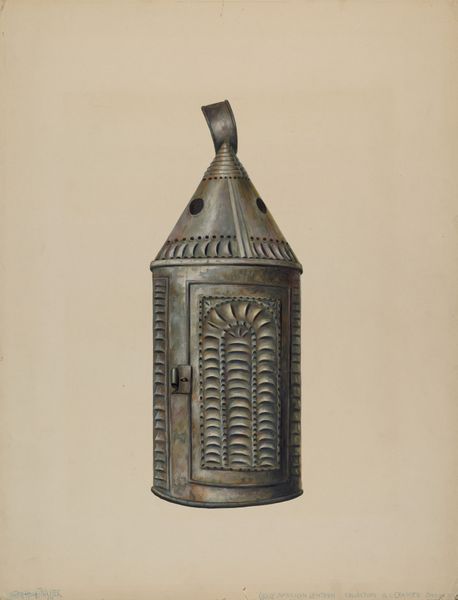
drawing, paper, ink, pencil
#
drawing
#
paper
#
ink
#
pencil
#
genre-painting
#
academic-art
#
realism
Dimensions: overall: 35.4 x 24.1 cm (13 15/16 x 9 1/2 in.) Original IAD Object: 11 3/8" high; 4 1/2" high
Copyright: National Gallery of Art: CC0 1.0
Curator: At first glance, I see formality and perhaps rigidity in this confessional—a very geometric structure. There's a cool detachment conveyed through the careful linework and subdued palette. What are your initial thoughts? Editor: Well, this ink and pencil drawing on paper, titled "Side of Confessional," dates to 1937, and is the creation of Dayton Brown. It reminds us of the crucial social role of the Church during the Great Depression. A stark visual of this sacred space speaks to faith but also to issues of penitence and social control in the era. Curator: Interesting, social control indeed, since you mention it. Look how the drawing utilizes verticality to emphasize the confessional's height and imposing presence, seemingly bearing down on a penitent below. The rigid geometry lends itself to a visual representation of power, of dominance. Editor: True, the verticality is compelling. The confessional’s design incorporates elements of tradition and perhaps wealth, evident in the ornamental carvings and even the cross at the apex. Churches often catered to influential local figures whose status informed aspects of religious life in these decades. Curator: Yes, the use of decorative details provides an interesting contrast to the bare interior; the cross, positioned as it is at the very top, offers a symbolic visual endpoint that reinforces ideas of hierarchy and order. Editor: Consider the subtle pink hue within the confessional, perhaps signifying flesh, humanity, secrets harbored, versus the hard architecture outside suggesting an almost clinical architecture intended for absolution within a communal moral standard. Curator: It almost feels staged—a drawing detached from the lived experience of confession itself, depersonalizing what must have been deeply personal and often socially fraught moments for individuals during that time. It’s as though the act of repentance has been thoroughly formalized. Editor: In this rendering, Dayton Brown seems to capture not merely the look, but also a particular cultural attitude towards this sacred practice. The drawing's precise details offer us a moment frozen in history; the architecture of belief made manifest in a troubled time. Curator: It's really quite an exceptional exercise in observing the intersection of form, structure, and this potent socio-historical context, with so much distilled in this one detailed drawing. Editor: Agreed, there's so much embedded meaning within this detailed piece. It reveals an intriguing social artifact as understood through the formalism and discipline displayed within it.
Comments
No comments
Be the first to comment and join the conversation on the ultimate creative platform.
